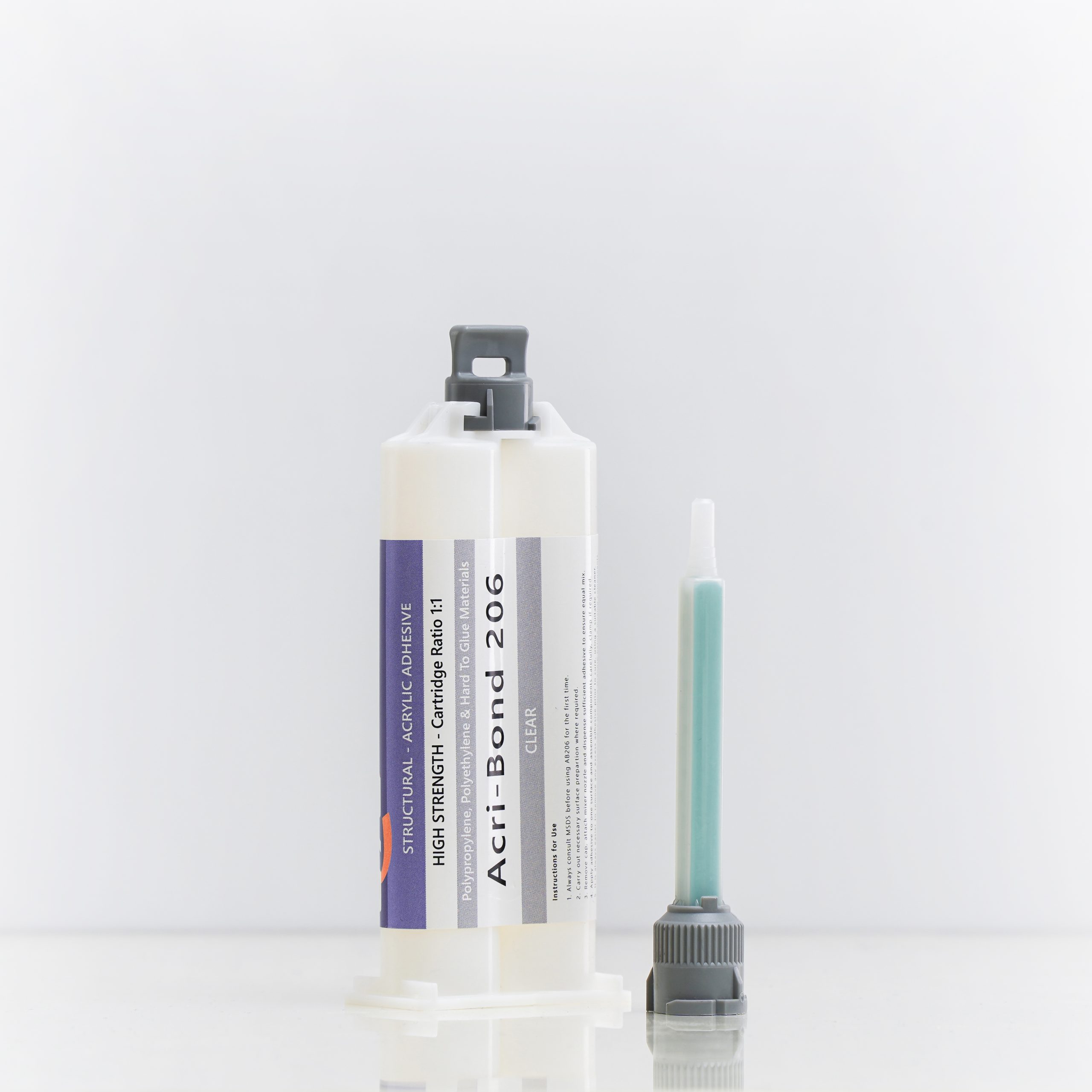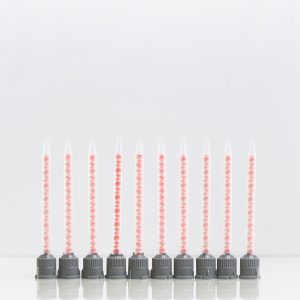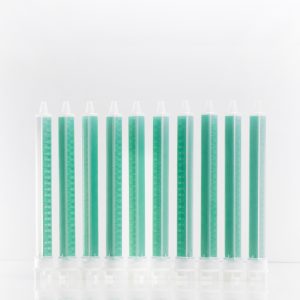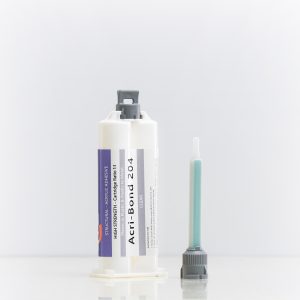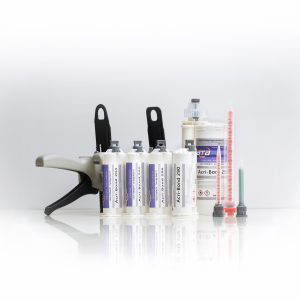Acri-Bond 206 is an industrial two-part acrylic-based adhesive engineered specifically for bonding difficult, low surface energy plastics like polypropylene (PP), polyethylene (PE), PTFE, and PVDF. With a 1:1 mix ratio and a working time of 5 to 6 minutes, this adhesive delivers strong, structural bonds at room temperature without the need for primers or surface treatments, making it a faster, more efficient solution for challenging substrates.
Developed as a polyolefin bonder, Acri-Bond 206 creates high-performance, permanent bonds where other adhesives struggle. Once cured, it offers excellent resistance to water, humidity, and chemicals. This makes it ideal for industrial, automotive, and assembly applications where long-term durability is essential. It also features a low exothermic reaction during bonding, which reduces the risk of material distortion.
Acri-Bond 206 bonds both similar and dissimilar materials, including plastics, metals, and composites, even with minimal surface preparation. This can significantly reduce labour time and production costs while improving bond consistency and part aesthetics. It is also an ideal alternative to mechanical fasteners, rivets, solvent welding, or plastic welding.
Specifications
| Chemical Composition | Methyl Methacrylate |
|---|---|
| Appearance | Off White |
| Mix Ratio | 1:1 |
| Viscosity (CPS) | 10,000 |
| Max Gap Fill | 3mm |
| Working Time (min) @ 25°C | 5 - 6 |
| Fixture Time (min) @ 25°C | 90 - 240 |
| Full Strength | 24 - 48 hrs |
| Similar Product | IPS PPX5 |
| Operating Temperatures °C | -40 to 80 |
| Pack Size | 50mL |
| Shelf Life | 9 Months |
Materials Bonded and Applications
Acri-Bond 206 bonds to a variety of polyolefin plastics (plastics that have a low surface energy) including:
- Poly Propylene (PP)
- Poly Ethylene (PE or HDPE and LDPE)
- PTFE (Teflon)
- PVDF
As well as other engineering plastics and other substrates including:
- Acrylic (PMMA)
- Polycarbonate (PC)
- Acrylonitrile Butadiene Styrene (ABS)
- Polyvinyl Chloride (PVC)
- Aluminium
- Steel
- Glass
- Concrete
- Fibreglass Reinforced Plastic (FRP)
- Carbon Fibre (CF)
- Wood
- MDF
- Thermoplastic Elastomers (TPE)
Acri-Bond 206 will NOT bond to:
- Nylons
- Silicone Surfaces
Some applications of Acri-Bond 206 include
- Engineering Plastic Fabrication
- Replacing the need for hardware, rivets or welding in production
- Many cases where PP or PE need to be bonded to themselves or other materials
- Repairing PP/PE Parts
- Automotive Part Repair or Fixture
Versatility of Acri-Bond 206
While bond strength is important, it’s not the only factor to consider when selecting an adhesive. Once fully cured, Acri-Bond 206 delivers a range of additional benefits that can make a real difference depending on your application.
- When fully cured Acri-Bond 206 can be sanded, grinded, routed and polished to get your desired finish.
- Great Chemical Resistance – Ethylene Glycol, Brake Fluid, Power Steering Fluid, Iso-Pentane
- High resistance to weathering and humid environments
- Can be used in indoor and outdoor applications
- Waterproofing when applied correctly
- Good Temperature resistance -40 to 80°C
Strength Test
| Substrate | Lap Shear Strength (psi) |
|---|---|
| Polypropylene (PP) | 1075 SF |
| Polyethylene (PE) | 1100 AF |
| Polycarbonate | 850 SF |
| Acrylic (PMMA) | 950 SF |
| Copper | 2275 CF |
| Mild Steel | 2050 AF |
| Aluminium | 2275 CF |
| Stainless Steel | 2300 CF |
** SF, AF, CF – determine how the substrate failed.
- SF – Substrate Failure
- AF – Adhesion Failure
- CF – Cohesive Failure
Available Sizes and Shelf Life
50mL Tubes – Perfect for all types of applications
Shelf Life – 9 Months
Instructions
Use a static mixer nozzle to accurately mix the contents of the 1:1 cartridge. Each cartridge includes one Static Mixer Nozzle Green 1:1, and you can purchase more in 10 packs from our store.
You will also require a 1:1 Static Mixing Dispenser to push the contents through the static mixer. This is the best way to apply it and get accurate, dependable results every time.
Parts to be joined should fit without forcing and be clean, it is recommended to use Acri-Bond Cleaner prior to applying any product to remove any oils, dust and dirt. It is important to let out any air bubbles by dispensing the first part of the cartridge onto some paper until the bubbles are gone. This is to make sure the two separate parts are fully mixed and is generally the first 2-3mL. Apply adhesive directly from the static mixer.
Press parts together in firm contact and use a clamp to secure while the glue reacts. Acri-Bond 206 will achieve a working strength within 90-240 min and full cure strength within 24-48 hours. You have approximately 5-6 minutes to work with the glue before it starts to set off.
Please check the TDS for material suitability and strength of each bond. For a tutorial how to use please refer to our YouTube Chanel or in the Videos tab above.

